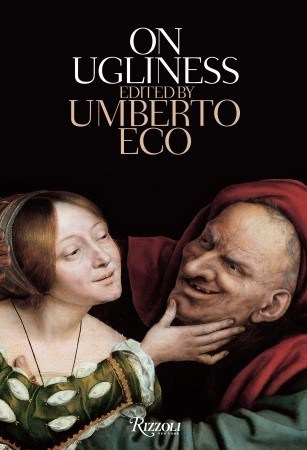Nevertheless, a history of ugliness shares some common characteristics with a history of beauty. First, we can only assume that the tastes of ordinary people corresponded in some way with the tastes of the artists of their day. If a visitor from space went into a gallery of contemporary art, and if he saw women's faces painted by Picasso and heard onlookers describing them as "beautiful," he might get the mistaken idea that in everyday life the men of our time find female creatures with faces like those painted by Picasso beautiful and desirable.On Ugliness is a compendium of examples of ugliness in art, literature, and philosophy, and though it's not very analytical, it is exhaustive--a full third of its bulk is taken up by excerpted writings, and another third by artwork. Eco's explication of these sources is deceptively minimal. He does, however, organize the works in such a way that really brings out the fascinating ways our thoughts on ugliness have changed over time. I had not noticed, for example, the way Classical depictions of ugliness are naturally meant to cause revulsion, while the early Christian world turns ugliness, in the figure of Christ's martyred body, into an icon of power and sympathy. Nor had I thought about the way this "love" of ugliness is reduplicated in modern movements like the avant-garde, camp, and kitsch. Other chapters are dedicated to the uglification of women in the Baroque period, the ugliness of the Devil, and the ugliness of the industrial landscape. To illustrate, he offers images from Dali to Bosch to Man Ray and Frida Kahlo, and excerpts from Dante, Shakespeare, the Marquis de Sade, Kafka, William Gibson...
At times, the thread that ties these things together seems pretty thin. I think that I ought to have read the predecessor to On Ugliness, called A History of Beauty, first. Since ugliness, as Eco explains, has no real "history" in the way beauty does, I wonder if that prior book seems less disjointed or more cohesive. Still, On Ugliness was a lot of fun. I appreciate the way Eco gets out of the way of his sources, providing only enough to let us really appreciate the gruesomeness of the full-color images and the literature.
As a side note, while this book is beautifully printed (not that you'd call it a coffee-table book, I guess, unless you have weird people over for coffee) it is inexplicably riddled with errors and typos, from misspelled words to incorrect information. (Canterbury Tales wasn't published in 1532!) But something about that is appropriate, I guess...


1 comment:
This sounds great.
Post a Comment